System Compensation
Introduction
This example will demonstrate using system compensation in CAM operations, and will provide links to related topics.
System Compensation Example
For each operation you can choose to use compensation or not. When using compensation, you can choose to use System Compensation, Machine Compensation, or a combination of both. This example will explore system compensation and the direction of the selected chain.
Important: When using system compensation with no machine compensation, the actual tool must be the exact size as entered in BobCAD-CAM. If something changes at the machine, you must go back to BobCAD, update the tool information, recompute, and repost the code to use at the machine.

Create a Mill 2 Axis Feature
- In the CAM Tree, right-click the Machine Setup - 1 and select Mill 2 Axis.
The Mill 2 Axis Wizard appears.
Feature Geometry Picking
- Click Select Geometry.
The Feature Geometry Picking dialog appears. Focus is automatically placed on the Selected Geometry list allowing you to choose the feature geometry from the graphics area.
- In the graphics area, right-click the edge of the part and select Constant Z.

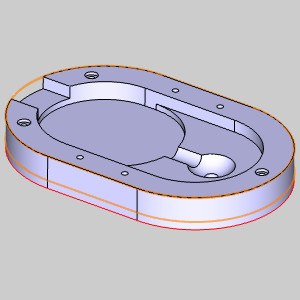
The geometry is added to the Selected Geometry list, and the feature preview is visible.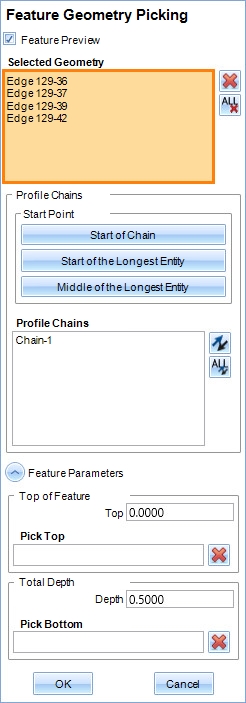
- In the Profile Chains list of the Feature Geometry Picking dialog, click Chain-1.

The chain direction is displayed in the graphics area. Pressing S will allow you to turn off Shaded view.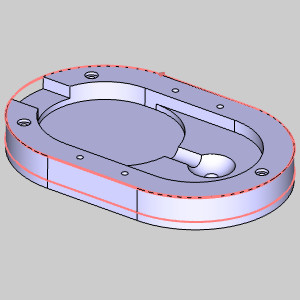
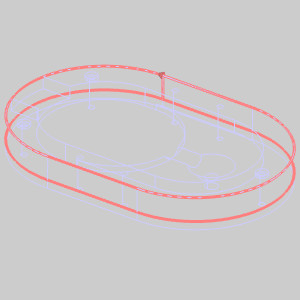
We will leave our chain in its counter clockwise direction for now. - At the bottom of the Feature Geometry Picking dialog, click in the Pick Bottom list.
The list is given focus.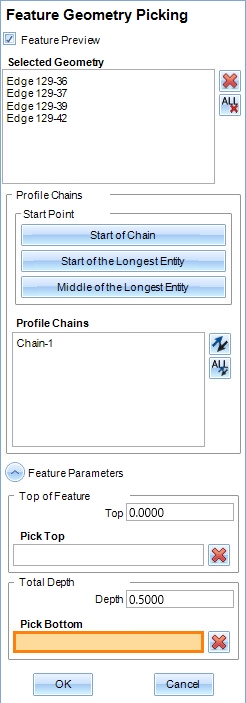
- In the graphics area, click the bottom edge of the model.

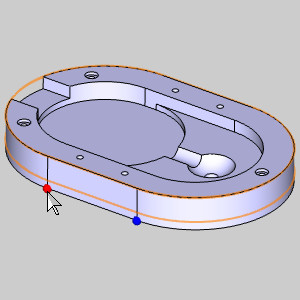

The snap point is added to the Pick Bottom list, and the Depth is updated.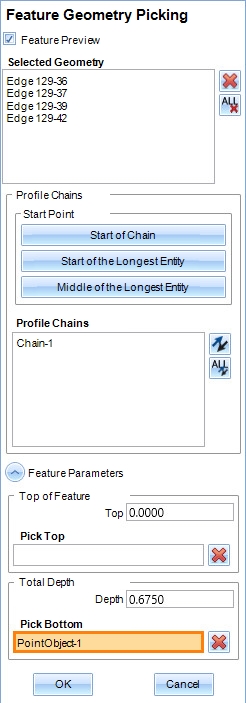
Note: Clicking the actual snap point that appears is not necessary. When you select an edge to pick a point, the closest snap point is always used.
- Click OK.
The Mill 2 Axis Wizard reappears.
Setting the Strategy and Leads
- In the tree in the left of the wizard, click Machining Strategy.
- In the Current Operations list, highlight Profile Rough and click the Delete button.
- In the tree in the left of the wizard, click Leads.
- In the Lead-in group, select Circular.
- In the Arc group, set the Radius to 0.3000.
- Click Compute.
The toolpath is created.

Updating the Compensation
- In the CAM Tree, right-click Feature 2 Axis and select Edit.
The Mill 2 Axis Wizard returns. - In the tree on the left side of the wizard, click Patterns to open the Patterns page.
- In the Compensation group, change System Compensation to Right.
- Click Compute.
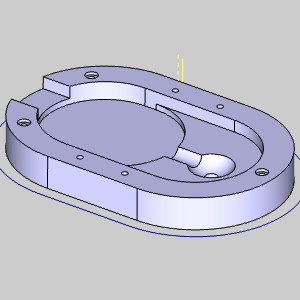
The toolpath is updated. With the counter clockwise direction of our chain, we are now using a conventional cut.
We will change this to a climb cut.
Updating the Chain direction
- In the CAM Tree, right-click the Geometry item in our Feature 2 Axis, and select Re/Select.
The Feature Geometry Picking dialog opens. - In the Profile Chains list, click Chain-1.
The chain is displayed in the graphics area. - Click the closer side of the part.
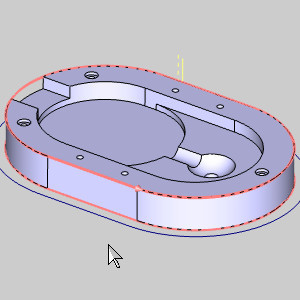
The chain start point moves to the closes snap point.
Our direction is still counter clockwise. - Click the same area.
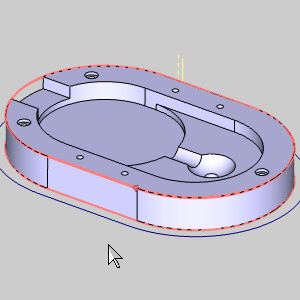
The chain reverses direction. Computing the feature now, would place the toolpath inside the part again. To avoid this, we will change our compensation again.
Updating the Compensation
- In the CAM Tree, right-click Feature 2 Axis and select Edit.
The Mill 2 Axis Wizard returns. - In the tree on the left side of the wizard, click Patterns to open the Patterns page.
- In the Compensation group, change System Compensation back to Left.
- Click Compute.
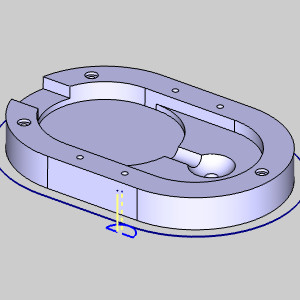
The toolpath is updated. With the clockwise direction of our chain, we are now using a climb cut.
Related Topic
Example: Machine Compensation Only
